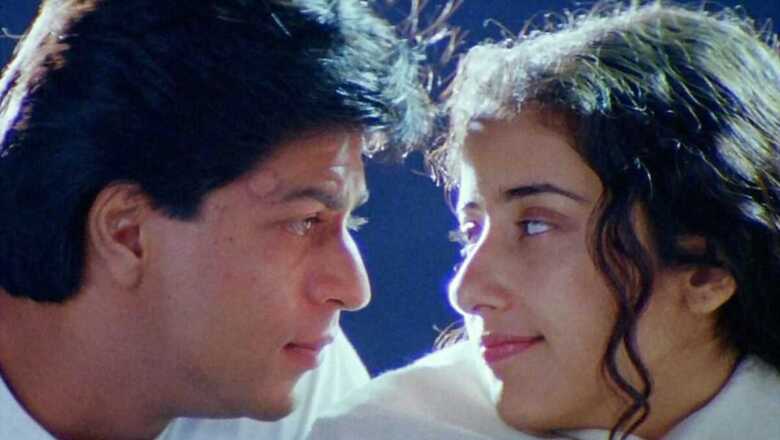
views
Nostalgia is a wonderful feeling.
A certain film comes on TV on a Sunday and takes you back to your childhood days in your hometown. You feel happy and proud to see someone who looks like you on screen, the beautiful roads and rivers that are so familiar that you instantly feel a connection. However, as a 23 year old Assamese woman, I have literally no idea how that feels like!
For years, I have looked for a mainstream Indian film I could relate to. There have been fleeting mentions and an “Assamese” character here and there in films like Margarita with a Straw, but there was nothing more than a few minutes of tokenism. Even when there were actors like Adil Hussain and Plabita Borthakur shining in brilliant, content-driven films, there were no Assamese stories per se.
That was why when I started watching Dil Se on an afternoon, determined to watch every film that legendary filmmaker Mani Ratnam had made, I was quite surprised to find that there was a film back in 1998 that was based in Assam. I was surprised as to why my parents never told me about it, for they had conveniently spoiled the ending for me. I got my answer soon enough.
As I watched the first half an hour of the film, I was over the moon. Shah Rukh Khan’s Amar had taken a fancy to Manisha Koirala’s Meghna, but my eyes were at the ‘dheki,’ a traditional rice-pounder used in Assamese villages, and the Mekhela Chadar (two piece traditional attire worn by women). Udit Narayan’s Aye Ajnabee transitioned into ‘Pakhi Pakhi Bidekhi’ hummed by Zubeen Garg.
When the film hinted at extremism in Assam, I thought it was very brave of the director to do so. There was finally a film made about the state’s militancy and extremism. What more could I want?
However, I was soon to be disappointed, because even when the beautiful frames and melodious tracks distracted me for a while, I could not help but think how uncomfortable it was for a woman to be followed around by a man, after having said no multiple times. But I had just found a movie about ‘us’, I was determined to not write it off so quickly. It was the ‘90s and stalking a woman was a norm at that time. I just needed to be patient.
However, as the film progressed and reached Ladakh, it slowly started slipping away. One of the most triggering experiences of my life was watching Amar grope Meghna and forcefully kiss her. I didn’t think the film could disappoint me any further, but it did, repeatedly.
Throughout the film, I had to watch Amar describe Meghna to several people as “choti choti aankhen, chapti naak” (small eyes, flat nose). To Meghna’s face, Amar would exoticise her “choti aankhen.” I understand that it was the ‘90s but I am saddened how that gave people the free pass to normalise racism in a mainstream film! Was human rights not invented in the 90s? Were Northeast Indians not harassed with racial slur in the ‘90s?
You see, for Assamese people, the trauma was two-pronged. While extremist organisations like ULFA for decades from its inception in 1979 upto the 2010s killed hundreds of people in the state, many suffered due to the Armed Forces Special Powers Act (AFSPA). Countless innocent people were caught in the crossfire.
For years, people in the state have been terrified of National Holidays and any festival for that matter, because it would mean a high possibility of explosion.
How do you take the collective trauma of a state and exploit it for your aesthetics, only to forget about it completely? Filmmakers with their “creative freedom” have done this for years, but what Dil Se did was glorify a stalker, sexual offender and a racist, and made him a Romeo for the rest of India to lap up.
Even the flashback scene about Meghna's childhood seemed superficial. When your protagonist was a victim of sexual harassment as a child, in what world did the maker think it was okay to romanticise the sexual harassment she faced on the hands of our “hero”?
Even the climax immortalises our hero, because our agency-less heroine was destined to die for nothing anyway. The whole extravagance of the embrace, as if no other members of the terrorist organisations had bombs on them, only went on to stroke the mainstream Indian saviour complex and the way it looks down upon Assam and other Northeastern states.
22 years have gone by since the film’s release and it is still termed as “iconic” and “revolutionary” and ‘brilliant.”
It probably is, for people who are looking from outside. For people who have lived through the trauma, it is a different story altogether. My parents did not tell me about Dil Se because they didn’t like it. Most people remember it as a film that lasted 10 minutes in Assam, even in “the ‘90s.” Can you blame them?
People everywhere else seem to love the film. Cinema pages on Instagram cannot get over how beautiful the frames are. Yes, the acting is great, so is AR Rahman’s music and Santosh Sivan’s cinematography. So what?
A friend, after I expressed my feelings for the movie, told me, “Yeah the stalking is a bit much but I don’t have a problem with the movie.”
“Of course you don’t. You’re not a woman. Or an Assamese.”




















Comments
0 comment